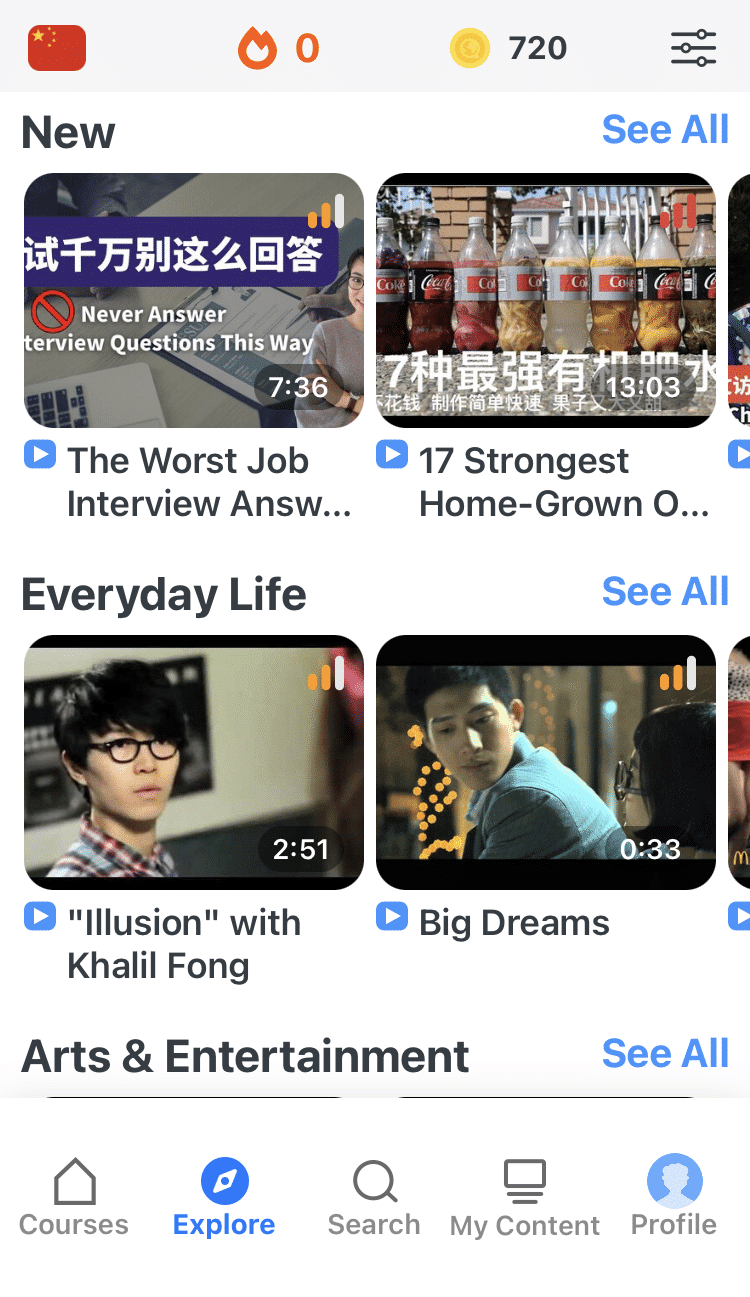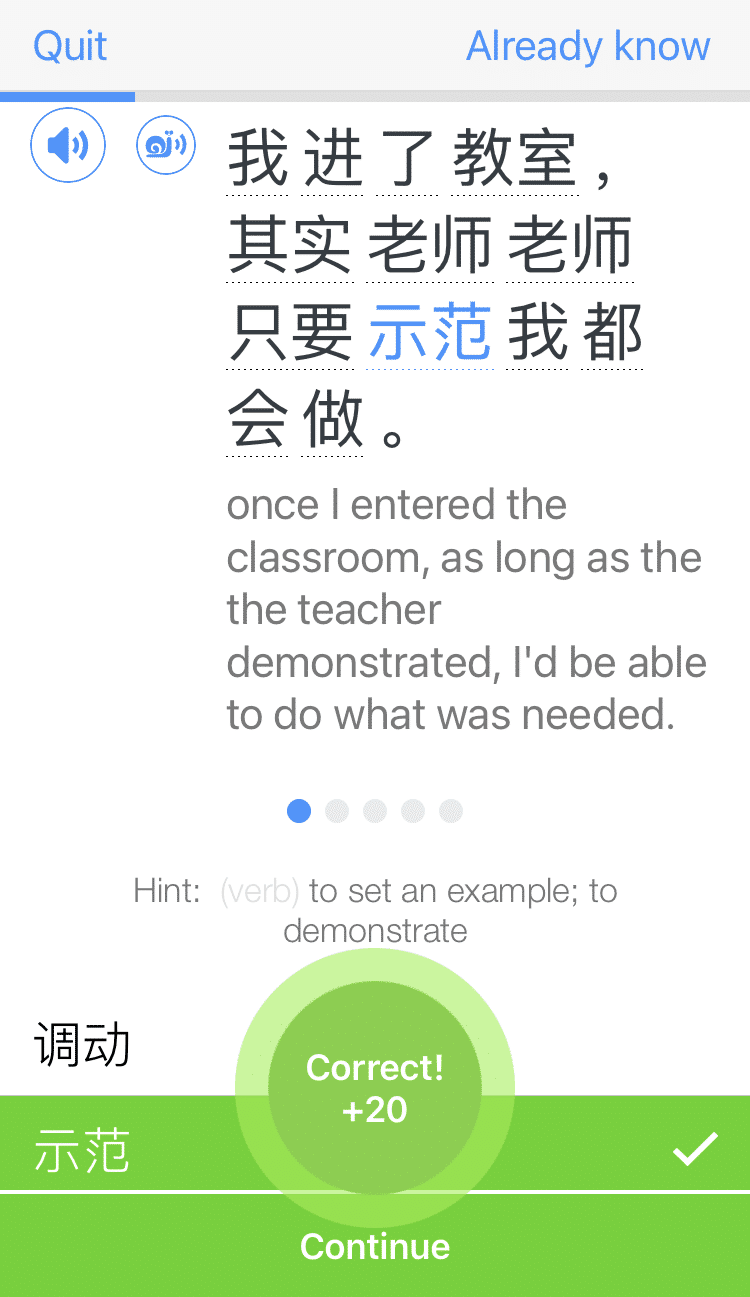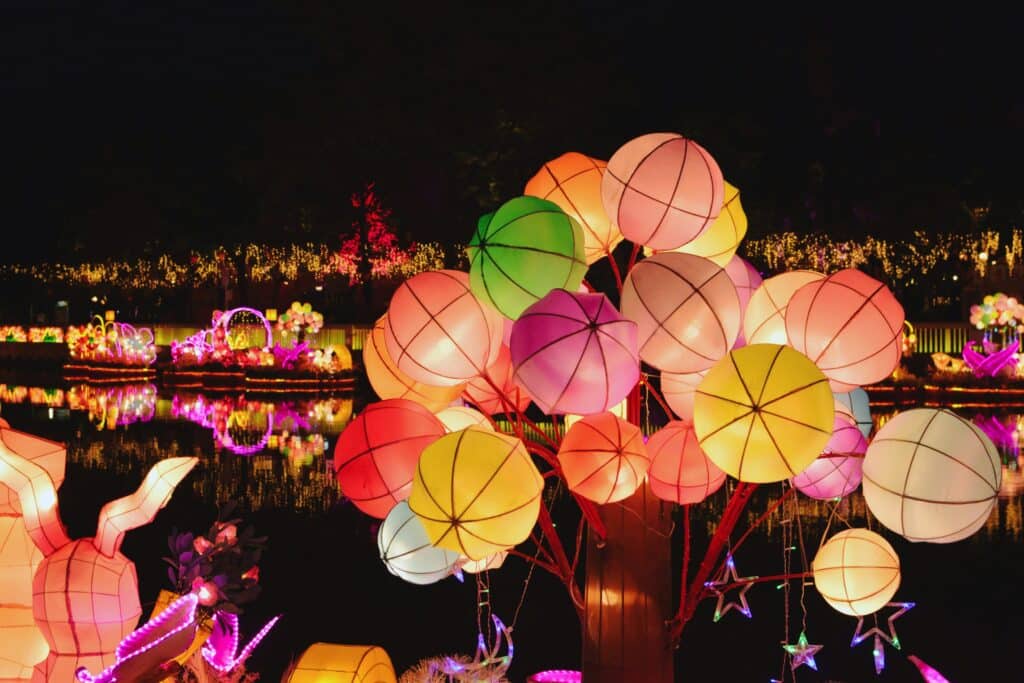
Guide to Colors in Chinese and Their Cultural Significance [With Quiz]
When you’re learning Chinese vocabulary, it helps to pick up basic words like colors ( 颜色 — yán sè) so you can give better descriptions.
Having a wide and varied color vocabulary will let you express and understand greater nuance in Mandarin.
In this guide, we’ll go over all of the main colors—plus quite a few less common ones—and touch on their significance in Chinese culture.
Once you’ve reviewed the post a few times, you can take the quick quiz to test what you’ve learned!
Contents
Download: This blog post is available as a convenient and portable PDF that you can take anywhere. Click here to get a copy. (Download)
Common Colors in Chinese
When you’re learning Chinese colors, it helps to start off with the most common! Try to think of the colors of your surroundings as you go about your day to solidify these in your memory.
You can also stick labels on things around your home or office with the characters of what color they are.
| Chinese | English |
|---|---|
| 红色 (hóng sè) | Red |
| 橙色 (chéng sè) | Orange |
| 黄色 (huáng sè) | Yellow |
| 绿色 (lǜ sè) | Green |
| 蓝色 (lán sè) | Blue |
| 紫色 (zǐ sè) | Purple |
| 白色 (bái sè) | White |
| 黑色 (hēi sè) | Black |
| 灰色 (hūi sè) | Gray |
| 棕色 (zōng sè) | Brown |
| 金色 (jīn sè) | Gold |
| 银色 (yín sè) | Silver |
You can pair 深 (shēn) “dark” or 浅 (qiǎn) “light” with any color hue to describe varying intensities of that color.
For example:
深橙 (shēn chéng) — dark orange
浅桔黄 (qiǎn jú huáng) — light tangerine yellow
红色 (hóng sè) — Red
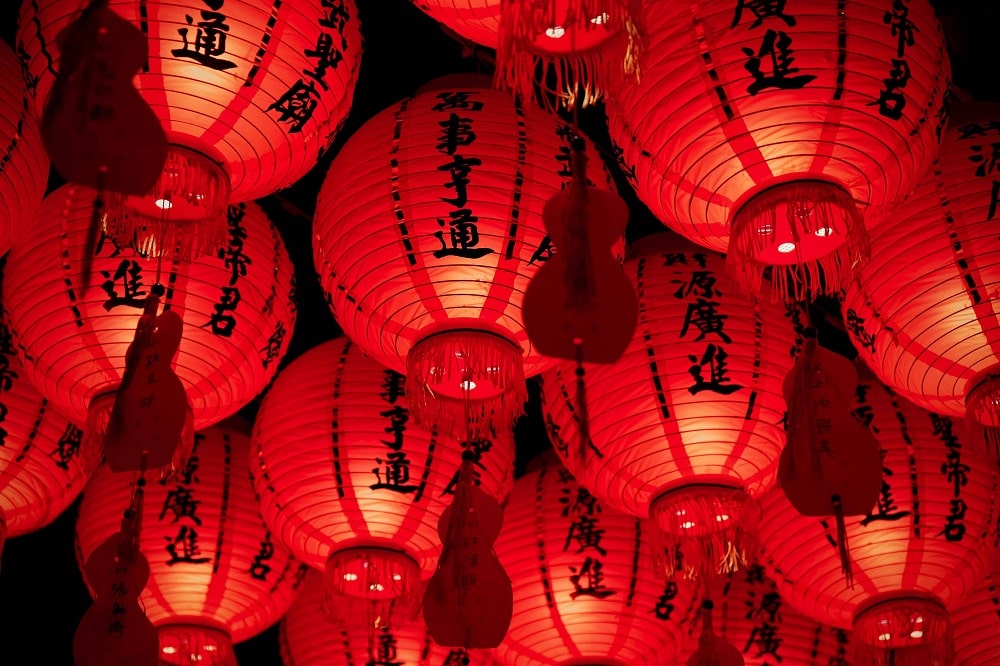
Red 红色 is a prominent color in Chinese culture. It represents strength, vitality and energy. It’s also related to festivity. An auspicious (lucky) color, it’s associated with holidays like Chinese New Year and weddings.
Varieties of red:
- 粉红 (fěn hóng) — pink
- 玫瑰红 (méi gūi hóng) — rose red
- 朱红 (zhū hóng) — vermilion
- 枣红 (zǎo hóng) — maroon
- 莲红 (lián hóng) — lotus red
- 深红 (shēn hóng) — dark red
- 辣椒红 (là jiāo hóng) — chili red
- 珊瑚红 (shān hú hóng) — coral
- 棕红 (zōng hóng) — reddish brown
- 鲜红 (xiān hóng) — bright red
- 绯红 (fēi hóng) — scarlet
橙色 (chéng sè) — Orange

Orange 橙色 is a lively and happy color, reminiscent of autumn and plentiful harvests. It can represent good fortune, celebration and wealth.
Varieties of orange:
- 橙红色 (chéng hóng sè) — reddish orange
- 柿子橙 (shì zǐ chéng) — persimmon
- 阳橙 (yáng chéng) — sun orange
- 热带橙 (rè dài chéng) — tropical orange
- 蜜橙 (mì chéng) — honey orange
- 深橙 (shēn chéng) — dark orange
黄色 (huáng sè) — Yellow

Yellow 黄色 is a bright and glorious color, associated with the sun. A color worn by ancient Chinese emperors, it represents riches and power. It’s also a happy color signifying inspiration and vitality.
Varieties of yellow:
- 桔黄 (jú huáng) — tangerine
- 柠檬黄 (níng méng huáng) — lemon yellow
- 橄榄黄 (gǎn lǎn huáng) — olive yellow
- 杏黄 (xìng huáng) — apricot
- 金黄 (jīn huáng) — golden yellow
绿色 (lǜ sè) — Green

Green 绿色 is a color representing nature and new growth. It’s a lively and fresh color. Green-colored jade jewelry has been popular throughout Chinese history among those who could afford it.
Green does have a couple of negative connotations in Chinese culture, though. For example, to be “green-faced” in Chinese is to be sick, and to “wear a green hat” is to be cheated on by your wife.
Varieties of green:
- 豆绿 (dòu lǜ) — bean color
- 橄榄绿 (gǎn lǎn lǜ) — olive green
- 茶绿 (chá lǜ) — tea green
- 葱绿 (cōng lǜ) — scallion green
- 苹果绿 (píng gǔo lǜ) — apple green
- 森林绿 (sēn lín lǜ) — forest green
- 水草绿 (shǔi cǎo lǜ) — seaweed
- 草绿 (cǎo lǜ) — grass green
蓝色 (lán sè) — Blue

Blue 蓝色 is an expansive color, the hue of the open skies and the ocean. A peaceful color, blue in Chinese culture is associated with the iconic, blue-painted pottery pieces. Blue can also be a color of sadness.
Varieties of blue:
- 天蓝 (tiān lán) — sky blue
- 蔚蓝 (wèi lán) — azure
- 月光蓝 (yuè guāng lán) — moonlight blue
- 海洋蓝 (hǎi yáng lán) — sea blue
- 湖蓝 (hú lán) — lake blue
紫色 (zǐ sè) — Purple

Purple 紫色 is a luxurious, mysterious color, suggesting beauty, passion and emotional depth.
Varieties of purple:
- 紫罗兰色 (zǐ lúo lán sè) — violet
- 葡萄紫 (pú táo zǐ) — grape color / grayish purple
- 玫瑰紫 (méi gūi zǐ) — rose purple
- 暗紫 (àn zǐ) — gloomy purple
白色 (bái sè) — White
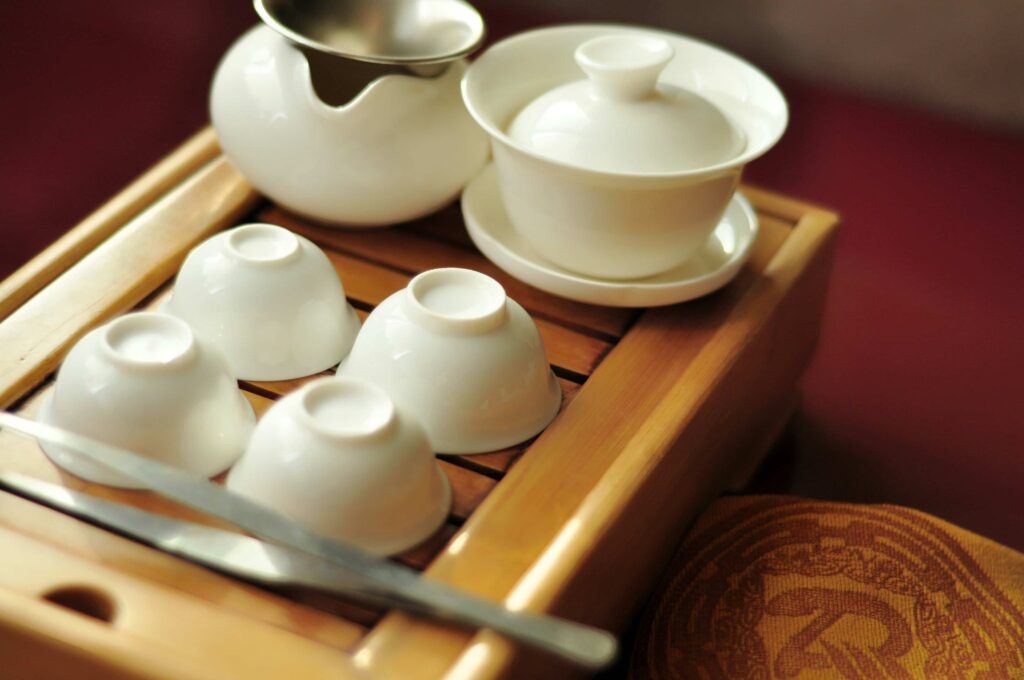
White 白色 can connote a sense of superiority. It can also represent goodness and purity. In Chinese culture, white is often used in combination with other colors. White by itself is a funeral color.
Therefore, in traditional Chinese culture, people don’t normally wear white accessories in their hair or give white flowers as gifts, because of the association with mourning.
Varieties of white:
- 象牙白 (xiàng yá bái) — ivory
- 牡蛎白 (mǔ lì bái) — oyster white
- 珍珠白 (zhēn zhū bái) — pearl white
- 玉石白 (yù shí bái) — jade white
- 银白 (yín bái) — silvery white
- 米白 (mǐ bái) — beige
黑色 (hēi sè) — Black

Black 黑色 is a basic and ever-trendy color. It can be somber or sophisticated. In Chinese culture, black is often worn by elderly ladies, since bright colors are thought to be suited only for young people.
Varieties of black:
- 土黑 (tǔ hēi) — soil or earth-colored
- 煤黑 (méi hēi) — coal black
- 碳黑 (tàn hēi) — soot black
- 古铜黑 (gǔ tóng hēi) — black like the color of old copper
- 铁黑 (tiě hēi) — black like iron
灰色 (hūi sè) — Gray
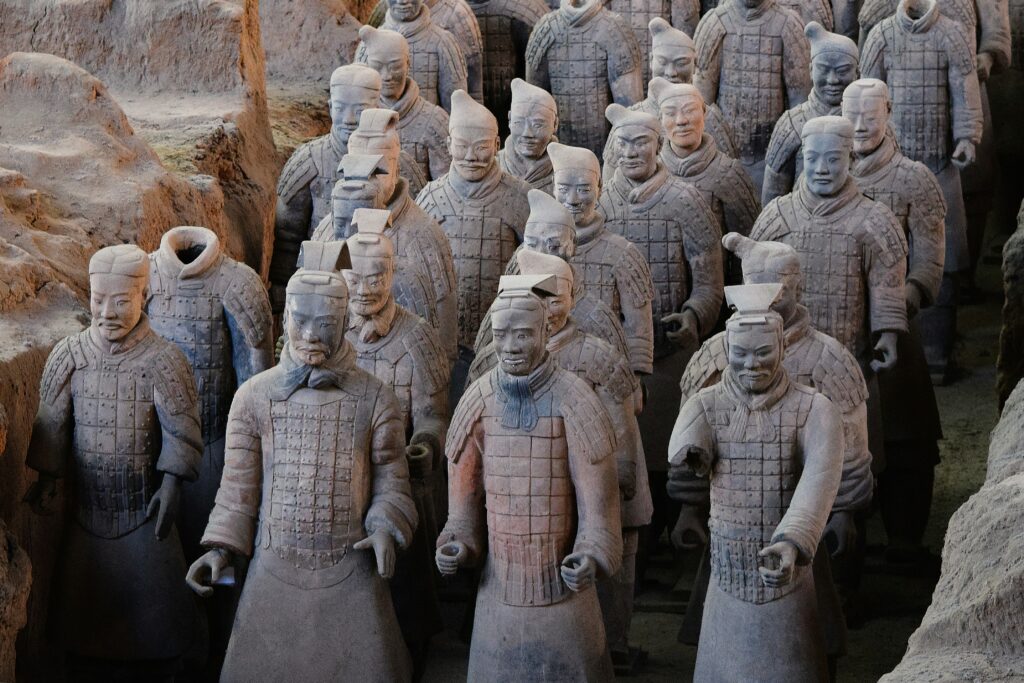
Gray 灰色 is sometimes dark and gloomy, but it can be modern and trendy at other times.
Varieties of gray:
- 银灰 (yín hūi) — silver gray
- 铁灰 (tiě hūi) — iron gray
- 铅灰 (qiān hūi) — lead gray
- 烟灰 (yān hūi) — smoky gray
棕色 (zōng sè) — Brown
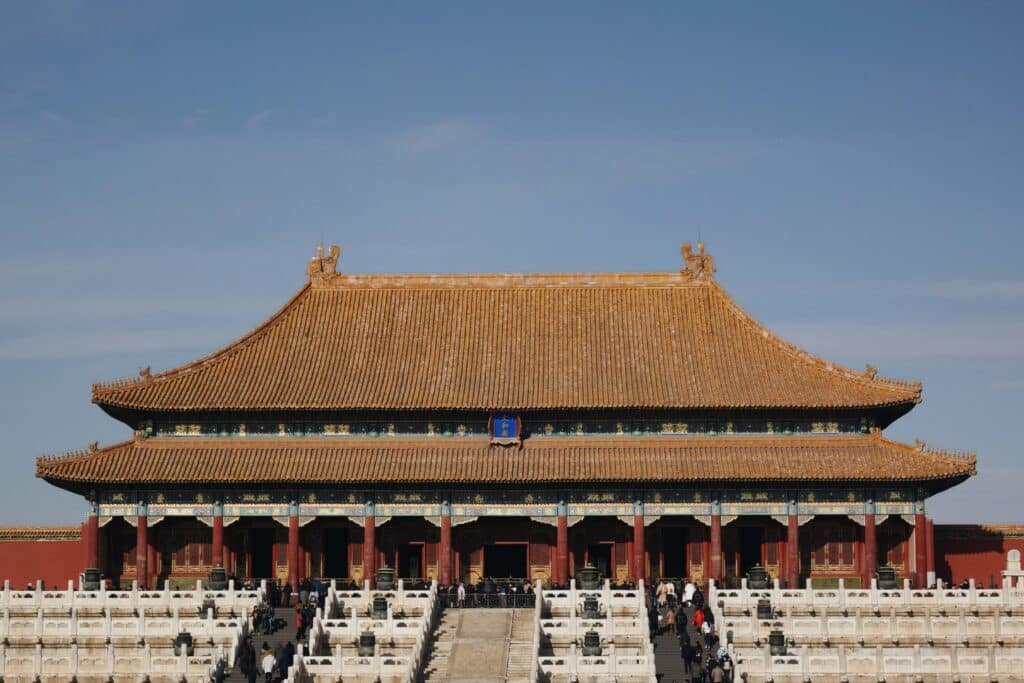
Brown 棕色 is an earthy and warm color. It’s a popular choice for both home furnishings and fashion in Chinese culture.
Varieties of brown:
其它颜色 (qí tā yán sè) — Other Colors
Did we cover all the colors? Perhaps the main ones, but wait, there’s more…!
Here are special and miscellaneous colors, some from popular fashion, that you can add to your vocabulary.
- 咖啡色 (kā fēi sè) — coffee color (or “brown” for Cantonese speakers)
- 奶油色 (nǎi yóu sè) — cream or nude
- 豆沙色 (dòu shā sè) — literally “red bean colored,” this color looks like a pinky-mauve and is a popular color for lipstick!
- 牛仔色 (níu zǎi sè) — denim colored
- 荧光色 (yíng guāng sè) — neon
- 彩虹色 (cǎi hóng sè) — rainbow
Whew! Those were a lot of colors!
To explore the world of Chinese colors even further, keep an ear out for colors in use in everyday conversations or Chinese-language videos like the kind you’ll find on FluentU.
FluentU takes authentic videos—like music videos, movie trailers, news and inspiring talks—and turns them into personalized language learning lessons.
You can try FluentU for free for 2 weeks. Check out the website or download the iOS app or Android app.
P.S. Click here to take advantage of our current sale! (Expires at the end of this month.)
Quiz on Chinese Colors
Now that we’ve gone over all of these Chinese color words, it’s time to test what you’ve learned! Take the quiz below (without looking at the answers above!) and just refresh the page if you want to start over or retake it.
How do you say "yellow" in Chinese?
How do you say "silver" in Chinese?
What color is 黑色 (hēi sè)?
How do you say "white" in Chinese?
How do you say "brown" in Chinese?
What color is 紫色 (zǐ sè)?
What color is 红色 (hóng sè)?
How do you say "blue" in Chinese?
How do you say "dark orange" in Chinese?
How do you say "pink" in Chinese?
What color is 绿色 (lǜ sè)?
How do you say "rainbow" in Chinese?
How do you say "violet" in Chinese?
How do you say "neon" in Chinese?
What color is 金色 (jīn sè)?
With all the Chinese colors we’ve gone over in this article, you’re well-prepared to start describing things with more detail and accuracy.
Welcome to a more colorful world in Chinese!
And One More Thing...
If you want to continue learning Chinese with interactive and authentic Chinese content, then you'll love FluentU.
FluentU naturally eases you into learning Chinese language. Native Chinese content comes within reach, and you'll learn Chinese as it's spoken in real life.
FluentU has a wide range of contemporary videos—like dramas, TV shows, commercials and music videos.
FluentU brings these native Chinese videos within reach via interactive captions. You can tap on any word to instantly look it up. All words have carefully written definitions and examples that will help you understand how a word is used. Tap to add words you'd like to review to a vocab list.
FluentU's Learn Mode turns every video into a language learning lesson. You can always swipe left or right to see more examples for the word you're learning.
The best part is that FluentU always keeps track of your vocabulary. It customizes quizzes to focus on areas that need attention and reminds you when it’s time to review what you’ve learned. You have a 100% personalized experience.
Start using the FluentU website on your computer or tablet or, better yet, download the FluentU app from the iTunes or Google Play store. Click here to take advantage of our current sale! (Expires at the end of this month.)
Download: This blog post is available as a convenient and portable PDF that you can take anywhere. Click here to get a copy. (Download)

